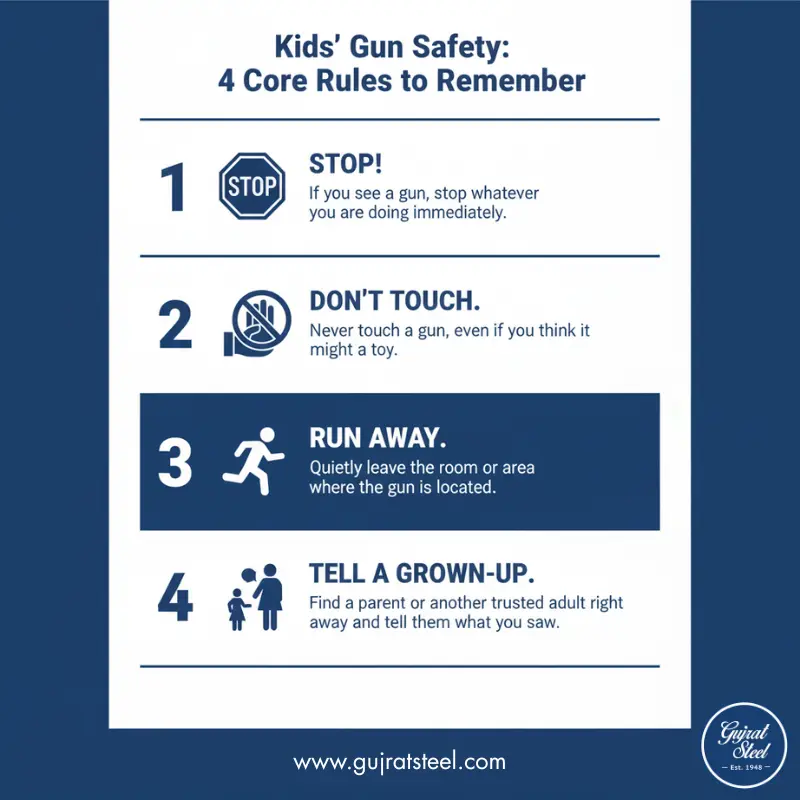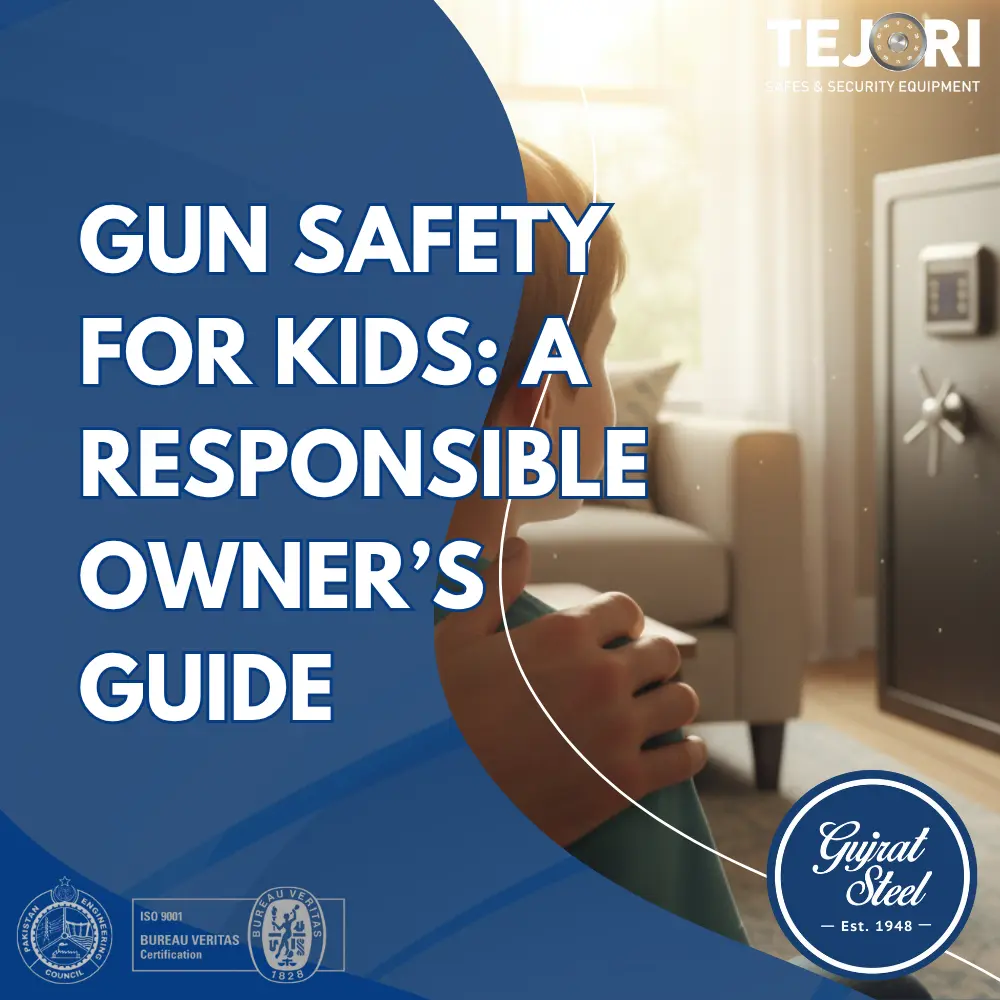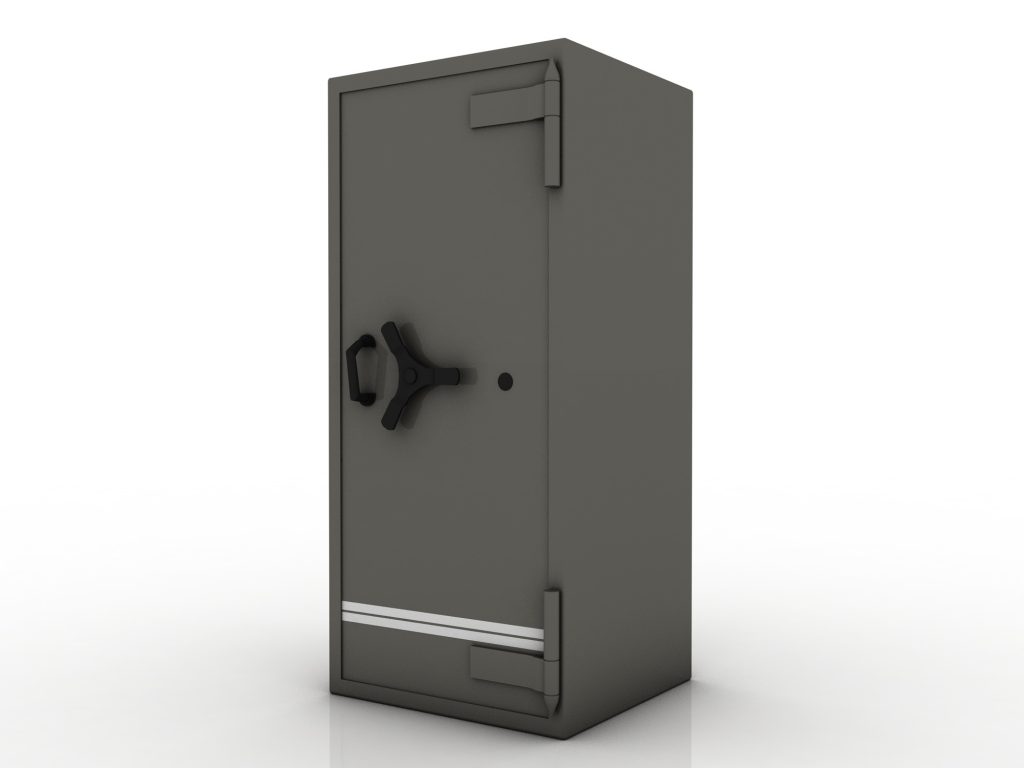Gun safety for kids is a two-part responsibility: securing all firearms without fail, preferably in a high-quality gun safe, and having direct, age-appropriate conversations about the real dangers of guns. This dual approach removes access and eliminates dangerous curiosity, creating a truly safe home environment.
Key Takeaways
- Secure Storage is Non-Negotiable: The single most important rule is to prevent unauthorized access. A dedicated gun safe is the most effective tool for this job.
- Education is Prevention: Talking openly and honestly with your children about firearms demystifies them and replaces curiosity with a healthy respect for their power.
- Safety is a Behavior, Not a Gadget: Your actions as a gun owner teach your children more than your words ever will. Model responsible behavior at all times.
- Safety Extends Beyond Your Home: You must also be prepared to discuss gun safety with the parents of your children’s friends to ensure their safety during playdates.
Table of Contents
The Unbreakable Foundation: Secure Firearm Storage
Before a single word is spoken to a child about guns, a physical barrier must be in place. Children are naturally curious and surprisingly resourceful. Assuming a firearm is safe simply because it’s “hidden” is a dangerous and often tragic mistake. Effective storage is about making a firearm completely inaccessible to anyone who is not authorized to use it.
Why a Closet Shelf or a Drawer is Not Enough
Many well-intentioned gun owners believe a high shelf or a locked bedroom door is sufficient. This thinking fails to account for a child’s perspective. To them, a forbidden room or a hidden box is a challenge, an adventure waiting to happen. Simple key locks on drawers or cabinets can often be picked or forced open with common household tools. The only guaranteed method of preventing access is using a purpose-built storage solution.
The Gold Standard of Safety: The Gun Safe
When it comes to securing firearms from children, there is no substitute for a quality gun safe. A gun safe is not just a locked box; it’s a piece of security equipment engineered specifically to prevent unauthorized access. It acts as a definitive physical stop, removing any possibility of a child stumbling upon a firearm.
Investing in a proper gun safe provides peace of mind that cannot be achieved with lesser methods. It sends a clear, unspoken message to your children that these items are different, that they require a serious level of respect and security, and that they are strictly off-limits without your direct supervision.
Choosing the Right Gun Safe for Your Family
Not all safes are created equal. When your primary goal is child access prevention, here are the key features to consider:
- A Reliable Locking Mechanism: Modern safes offer several lock types. Biometric locks use a fingerprint for instant access, electronic keypads offer speed and convenience, while traditional mechanical dial locks provide time-tested reliability. Choose the one you can operate quickly and confidently.
- Solid Steel Construction: The thickness of the steel (measured in gauge) determines how resistant the safe is to being pried or cut open. A lower gauge number means thicker, more secure steel.
- Secure Bolting System: Look for thick, active locking bolts on at least three sides of the door. These bolts are what physically keep the door sealed, even if the hinges are attacked.
- Proper Anchoring: A smaller safe can be carried away. Any reputable gun safe should have pre-drilled holes allowing you to bolt it securely to the floor or a wall, making it a permanent fixture in your home.
Quick-Access Locks and Their Role
Smaller, quick-access lockboxes also have a place in a comprehensive safety plan, such as for bedside or vehicle storage. However, for the primary storage of firearms in a home with children, a larger, heavier, and more robust gun safe should always be the centerpiece of your strategy.
The Power of Conversation: How to Talk to Your Kids About Guns
Once your firearms are secured, the next critical step is education. Children will encounter guns, whether through friends, media, or video games. Your job is to provide them with the real-world knowledge they need to stay safe. Ignoring the topic will not protect them; it will only leave them unprepared.
Start the Conversation Early and Have It Often
There is no “perfect” age to begin, but the conversation should start as soon as a child is old enough to understand simple rules and is potentially mobile enough to encounter a firearm. This is not a one-time lecture but an ongoing dialogue that evolves as your child grows.
The 4 Simple Rules of Gun Safety for Children
While adults follow a more detailed set of principles, the message for children should be simple, clear, and easy to remember. The widely recognized Four Rules of Gun Safety for kids are:
- Stop!
- Don’t Touch.
- Run Away.
- Tell a Grown-up.

Drill these rules into their memory. Make it a chant. Ask them what they would do if they saw a gun at a friend’s house. The goal is to create an automatic, instinctual response that overrides any sense of curiosity.
Tackling the Curiosity Factor Head-On
Children are drawn to the things they are told not to touch. Simply saying “never touch a gun” without context can make it seem like a fascinating secret. It’s more effective to demystify them.
Explain what guns are for in simple terms—that they are a tool used for hunting or sport by adults, but that they are extremely dangerous and can hurt people very badly if handled improperly. This frames the firearm not as a forbidden toy, but as a dangerous tool that is only for responsible adults.
Tailoring the Talk for Different Age Groups
Your conversation will change as your children mature.
- For Toddlers and Preschoolers (Ages 3-6): The message is black and white. Use the four simple rules. There is no nuance. Guns are dangerous, you never touch them, and you immediately get an adult if you see one.
- For Elementary Schoolers (Ages 7-11): You can begin to explain the difference between real guns and toy guns. Reinforce the four rules and emphasize that even if they think a gun is a toy, they should treat it as if it’s real and never touch it.
- For Teenagers (Ages 12+): The conversation can become more complex. Discuss the serious legal and life-altering consequences of firearm misuse. Talk about peer pressure, suicide prevention, and the importance of making responsible decisions. This is also the age where, if you choose, you can begin hands-on safety training under strict supervision.
Leading by Example: Modeling Responsible Gun Ownership
Your children will learn more from watching you than from listening to you. Your consistent, responsible behavior around firearms is the most powerful lesson you can teach.
A Zero-Tolerance Policy for Complacency
Never leave a firearm unattended, not even for a second. Every time you are finished handling a firearm, it should be immediately returned to its secure storage location, such as your gun safe. There are no exceptions to this rule. Your children need to see that this is a non-negotiable ritual.
The Ritual of Safe Handling and Cleaning
When you do handle your firearms for cleaning or maintenance, do so in a safe and deliberate manner. Ensure the firearm is unloaded, keep the muzzle pointed in a safe direction, and keep your finger off the trigger. Let your children see that handling a firearm is a serious, focused activity that demands respect and undivided attention.
Beyond Your Home: Ensuring Safety in Other Environments
Your gun safety plan is not complete until you consider the environments your children will be in when they are not with you. You can have the most secure home in the world, but your child could still be at risk at a friend’s or relative’s house.
Having the Conversation with Other Parents
This can feel awkward, but it is one of the most important conversations you will ever have for your child’s safety. Before a playdate at a new friend’s house, it is perfectly acceptable and responsible to ask:
“My child is very curious, so we’re just asking all our friends with kids: Are there any firearms in your home, and if so, how are they stored?”
A responsible gun owner will respect the question. If the parent gets defensive or dismissive, it might be a sign that their home is not a safe environment for your child.
Understanding and Heeding the Warning Signs
Part of gun safety is recognizing when someone, including your own child, might be a danger to themselves or others. Be aware of your children’s mental health. Signs of depression, intense anger, or suicidal thoughts are serious red flags. During these times, it is more critical than ever that all firearms are completely secured and inaccessible. Your gun safe is not just protecting against accidents; it’s also a vital barrier during moments of emotional crisis.
Conclusion
Gun safety for kids is an active, ongoing commitment. It is a system built on two pillars: impenetrable physical security, best provided by a high-quality gun safe, and consistent, open education. By implementing both, you create multiple layers of protection that keep your children safe and foster a culture of true firearm responsibility.




